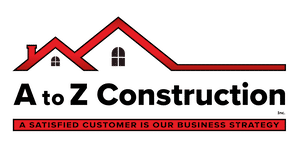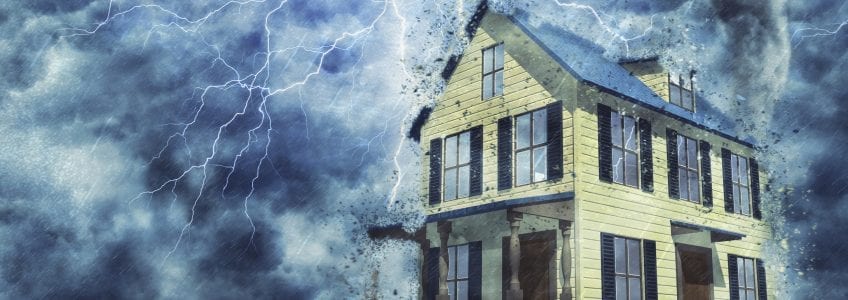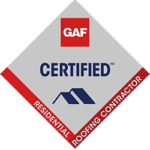What Is the Best Type of Roofing Underlayment for Asphalt Shingles?
When it comes to roofing, one crucial element often overlooked is the underlayment. Acting as a protective barrier between the roofing material and the decking, roofing underlayment plays a pivotal role in ensuring the longevity and durability of your roof. In this comprehensive guide, we’ll explore the significance of synthetic felt roofing underlayment and its unmatched water resistance capabilities.
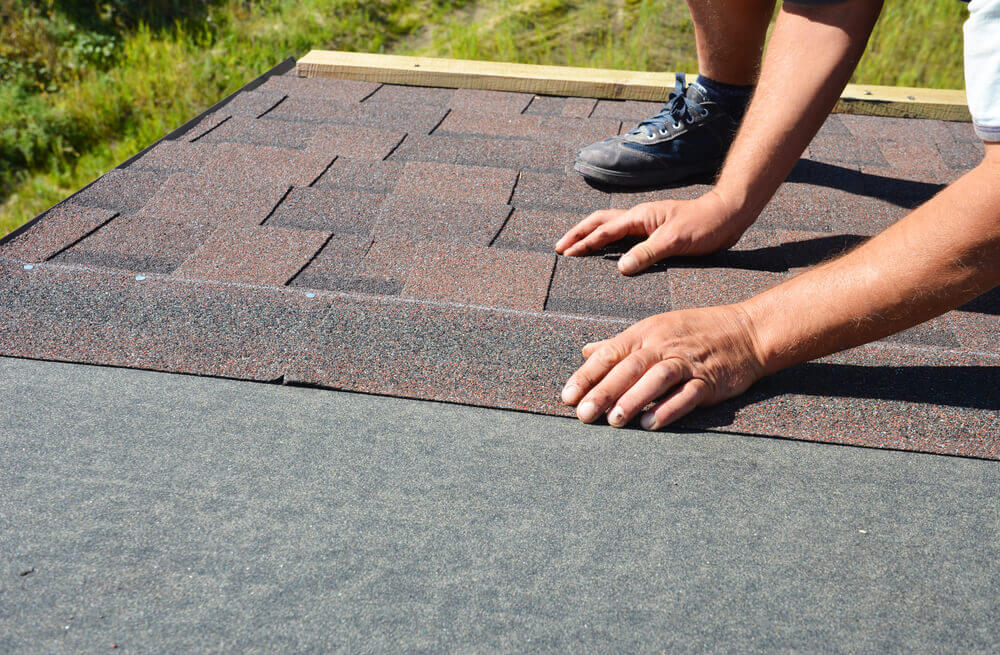
Understanding Synthetic Felt: A Superior Choice
Synthetic felt, also known as roofing felt or underlayment, is a modern alternative to traditional asphalt-saturated felt. Its popularity stems from its exceptional water resistance, making it a preferred choice for roofing projects across various climates. Unlike its asphalt counterpart, synthetic felt offers higher durability and longevity, ensuring optimal protection for your roof.
The Importance of Water Resistance
One of the primary functions of roofing underlayment is to shield the decking from water infiltration. Synthetic felt excels in this aspect, providing superior water resistance compared to conventional materials. By effectively repelling water, synthetic felt prevents moisture from seeping into the decking, thereby minimizing the risk of rot, mold, and structural damage.
Enhanced Protection for Your Roof Decking
The decking serves as the foundation for your roof, providing structural support and stability. However, exposure to moisture can compromise its integrity over time. Synthetic felt acts as a reliable barrier, safeguarding the decking from the harmful effects of water intrusion. With its high water resistance properties, synthetic felt ensures that your roof remains resilient and secure against the elements.
Choosing the Right Underlayment for Your Roof
When selecting roofing underlayment, it’s essential to consider factors such as climate, roof slope, and local building codes. Synthetic felt emerges as an ideal choice for its versatility and performance in various conditions. Whether you’re installing a new roof or replacing existing underlayment, opting for synthetic felt provides peace of mind knowing that your roof is well-protected.
Installation and Maintenance Tips
Proper installation and maintenance are crucial for maximizing the effectiveness of roofing underlayment. When installing synthetic felt, ensure that it is laid out evenly and securely, with overlapping seams to prevent water penetration. Additionally, regular inspections and maintenance routines can help identify any potential issues early on, allowing for timely repairs and prolonging the lifespan of your roof.
Conclusion
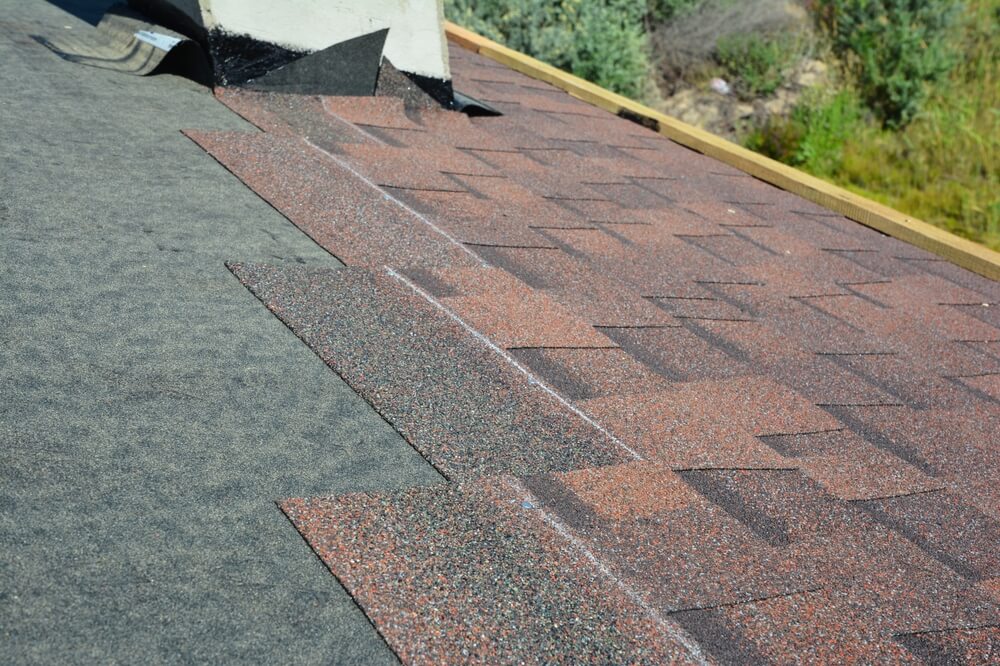
Roofing underlayment, particularly synthetic felt, plays a vital role in safeguarding your roof against water damage and prolonging its lifespan. With its superior water resistance and durability, synthetic felt offers unmatched protection for your roof decking, ensuring peace of mind for years to come. When planning your next roofing project, prioritize the use of synthetic felt underlayment to secure the longevity and integrity of your roof. Contact A to Z Construction today to schedule your consultation and ensure a reliable roofing solution.
What Are the Best Roofing Materials for Severe Weather Conditions?
In the realm of home maintenance, few things are as crucial as the materials that make up your roof. The right roofing materials can mean the difference between a secure, long-lasting shelter and constant repairs due to weather damage. Today, we’ll explore some of the best roofing materials on the market, considering their durability and resilience against various elements.
Slate Roof: A Time-Tested Defender
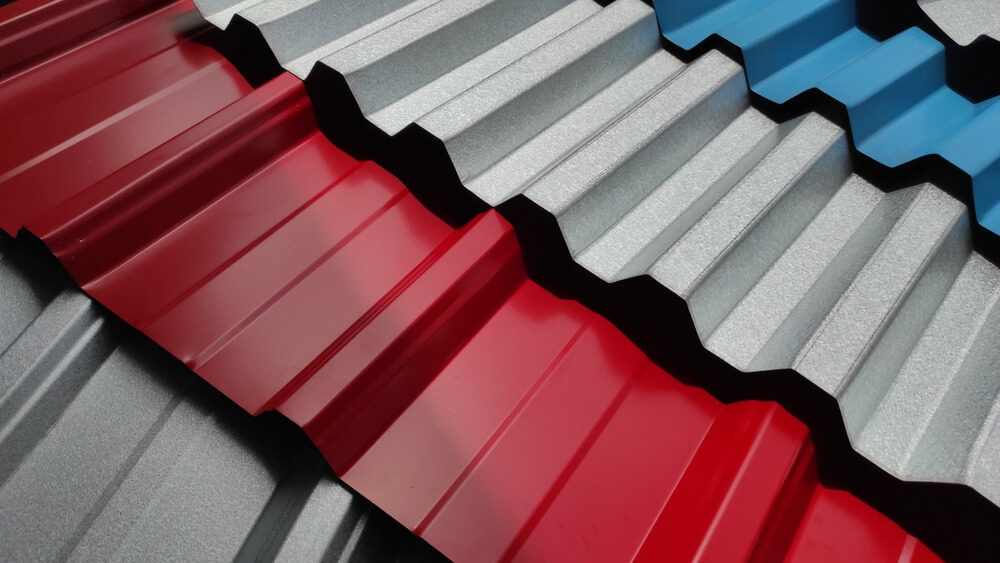
Slate roofs stand out as one of the top contenders in the roofing material arena. When it comes to defending your home against hail storms, few options rival the robustness of slate. Its natural composition makes it adept at deflecting hail and enduring harsh weather conditions. The durability of slate ensures that your roof remains steadfast against the elements, providing reliable protection for years to come.
Metal Roofs: Longevity and Resilience
Metal roofs present another formidable option for homeowners seeking durability. While they may sustain damage under extreme circumstances, such as severe hail storms, they boast an impressive lifespan. Unlike traditional asphalt shingles, metal roofs can endure without leaking for extended periods, offering peace of mind amidst inclement weather. Their resilience against wear and tear makes them a worthy investment for homeowners looking for long-term solutions.
The Impact of Hail on Asphalt Shingles
Asphalt shingles, although common, are more susceptible to damage from hail storms. When hailstones pummel these shingles, they dislodge granules and expose the underlying asphalt to the elements. Over time, this exposure leads to deterioration, compromising the roof’s ability to repel water. In regions like Minnesota, where weather patterns fluctuate dramatically, this deterioration process can accelerate, leaving homeowners vulnerable to leaks and structural damage.
Understanding Minnesota Weather Challenges
In states like Minnesota, where residents experience a diverse range of weather conditions, the choice of roofing materials becomes paramount. The combination of sun, snow, and rain puts immense pressure on roofs, necessitating materials that can withstand such fluctuations. Opting for robust roofing materials becomes not just a matter of preference but a practical decision to safeguard your home against the elements.
Navigating Insurance Claims After Storm Damage
After enduring a hail storm, homeowners often grapple with the aftermath, including potential damage to their roofs. While some may not notice immediate leaks, the underlying issues can manifest over time, leading to costly repairs. Navigating insurance claims in the wake of such events can be challenging, with limitations on filing periods and the need for timely assessments. Homeowners need to understand their coverage and act promptly to address any storm-related damages.
Conclusion
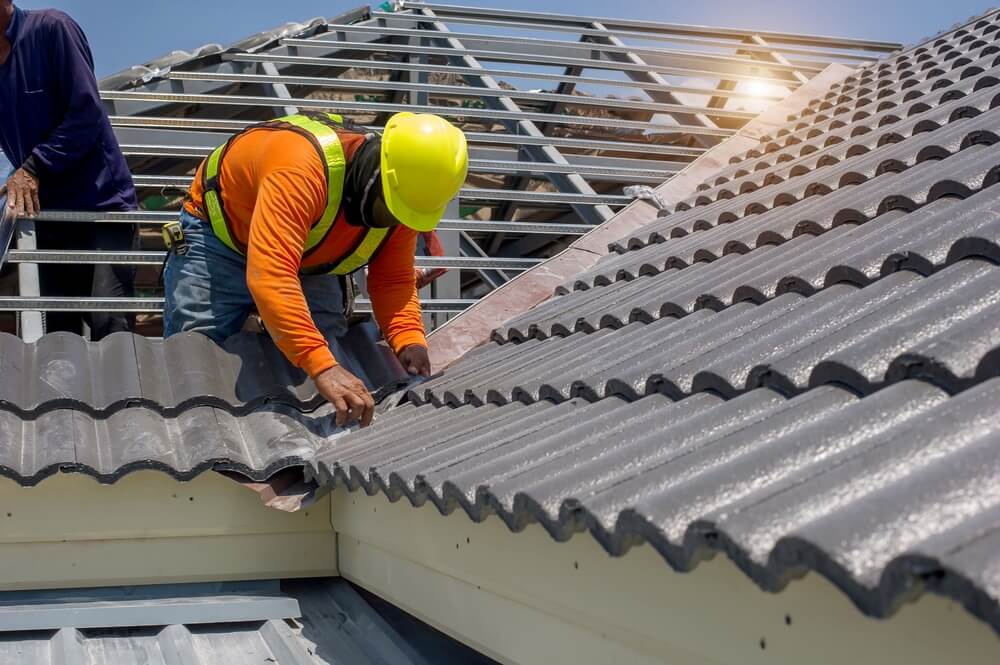
Selecting the right roofing materials is paramount to protecting your home from the elements. Whether you opt for the enduring strength of slate, the resilience of metal, or the affordability of asphalt shingles, each choice carries implications for your home’s longevity and safety. By considering the unique challenges posed by your local climate and investing in durable materials, you can fortify your home against whatever nature throws its way. If you need guidance in making the best choice for your property, don’t hesitate to contact A to Z Construction today for expert advice and assistance.
What Are the Common Issues Found During Roof Inspection?
In the wake of severe storms, homeowners often find themselves facing unexpected challenges, one of the most common being issues found during roof inspection. These examinations, typically prompted by the aftermath of intense weather conditions, reveal a range of problems that can compromise the integrity of the roof and, consequently, the safety and comfort of the home. Let’s explore some of the prevalent issues encountered during roof inspections and their implications.
Damage to Shingles
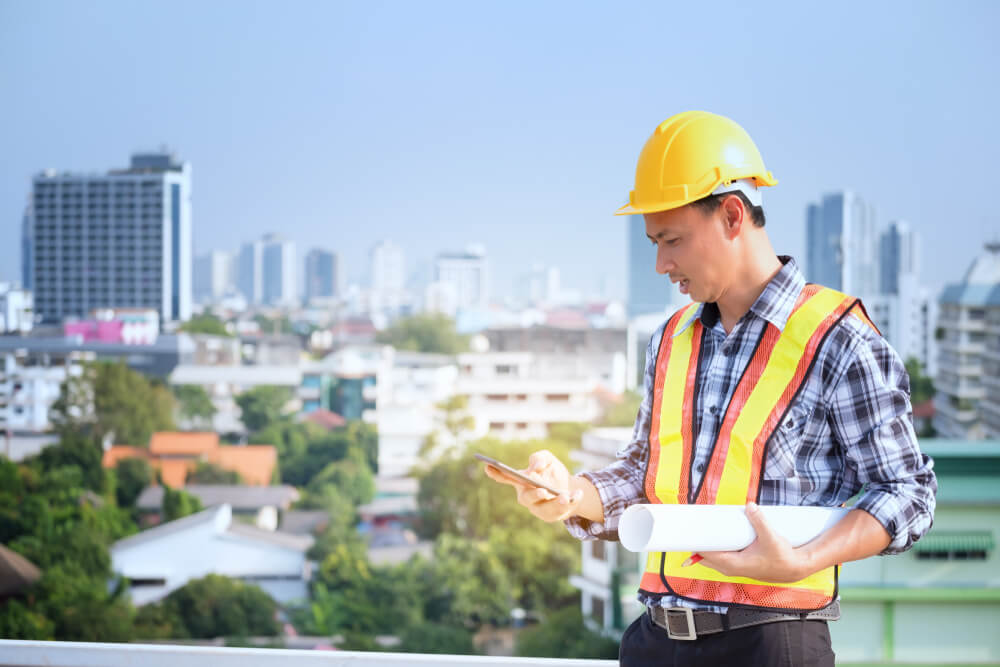
One of the primary concerns identified during roof inspections is damage to shingles. When severe storms sweep through an area, they can wreak havoc on the roof, causing significant harm to the shingles. Among the most frequently observed forms of damage are missing shingles, a glaring indication of the force with which the storm struck. In such cases, immediate action is necessary to prevent further deterioration and potential leakage. Roofing professionals may need to employ temporary measures, such as tarping, to safeguard the affected areas and mitigate the risk of water intrusion.
Granular Loss
Another common issue detected during roof inspections is granular loss. This phenomenon occurs when the protective granules embedded in the shingles are dislodged due to the impact of severe weather. As rain, hail, or debris pummels the roof, it can strip away these granules, leaving the underlying shingles vulnerable to deterioration. The loss of granules not only compromises the aesthetic appeal of the roof but also undermines its longevity. Without adequate granular protection, the shingles are more susceptible to UV damage, moisture penetration, and premature aging, hastening the need for repairs or replacement.
Impact Damage
In addition to granular loss, roof inspections often reveal evidence of impact damage. This type of damage manifests as bruising or indentations on the surface of the shingles, indicating direct contact with external objects during a storm. Whether it’s hailstones battering the roof or debris propelled by strong winds, these impacts can leave lasting storm damage that compromise the structural integrity of the shingles. Over time, the cumulative effect of such damage can weaken the roof’s ability to withstand future storms, necessitating prompt remediation to reinforce its defenses against inclement weather.
Shortened Lifespan
One of the consequences of the aforementioned issues is the shortened lifespan of the roof. When left unchecked, damage to shingles, granular loss, and impact damage collectively contribute to the accelerated deterioration of the roof system. What was once a robust and resilient barrier against the elements becomes increasingly fragile and susceptible to further harm. As a result, the anticipated lifespan of the roof is significantly reduced, necessitating premature repairs or replacement to ensure the long-term integrity of the structure.
Preventative Measures
While issues found during roof inspection can be disconcerting, proactive measures can help mitigate their impact and preserve the structural integrity of the roof. Regular inspections, conducted by qualified roofing professionals, enable early detection of potential issues, allowing for timely intervention and preventative maintenance. By addressing minor concerns before they escalate into major problems, homeowners can prolong the lifespan of their roofs and safeguard their homes against the destructive forces of nature.
Conclusion
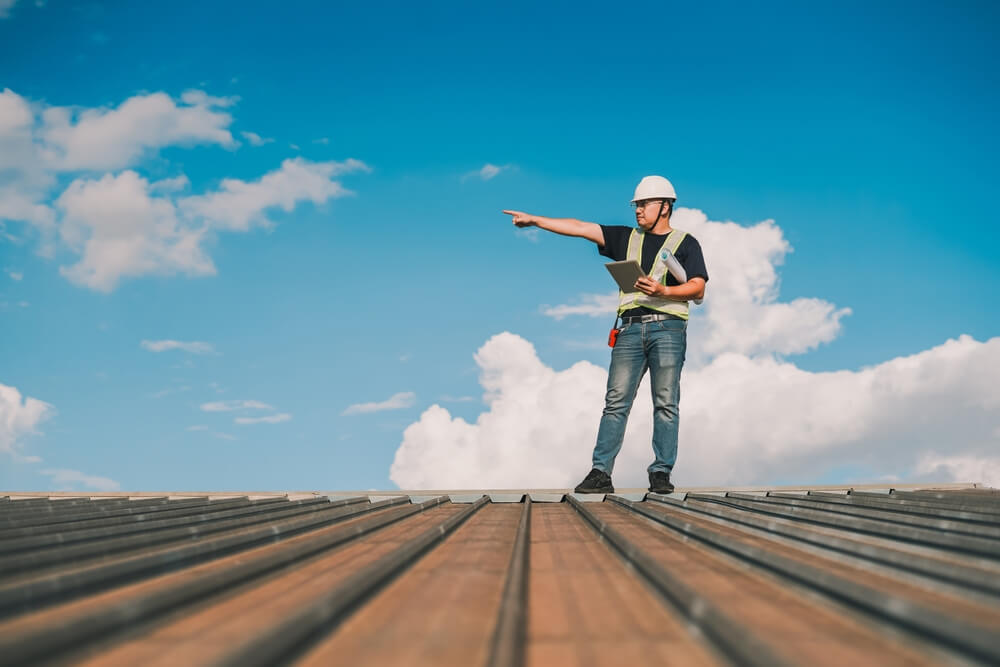
Issues found during roof inspection are a common consequence of severe storms and adverse weather conditions. From damage to shingles and granular loss to impact damage and shortened lifespan, these issues underscore the importance of proactive roof maintenance and timely repairs. By staying vigilant and addressing roofing issues promptly, homeowners can protect their investments and ensure the long-term durability of their homes. For expert assistance, homeowners can confidently contact A to Z Construction today.
What Are the Common Causes of Premature Roof Failure?
Is your roof showing signs of premature wear and tear? Are you experiencing unexpected leaks or missing shingles after a storm? You might be dealing with premature roof failure, a common issue that can significantly shorten the lifespan of your roof. In this guide, we’ll explore the causes of premature roof failure and discuss practical solutions to protect your home from damage.
The Impact of Hail on Roof Health
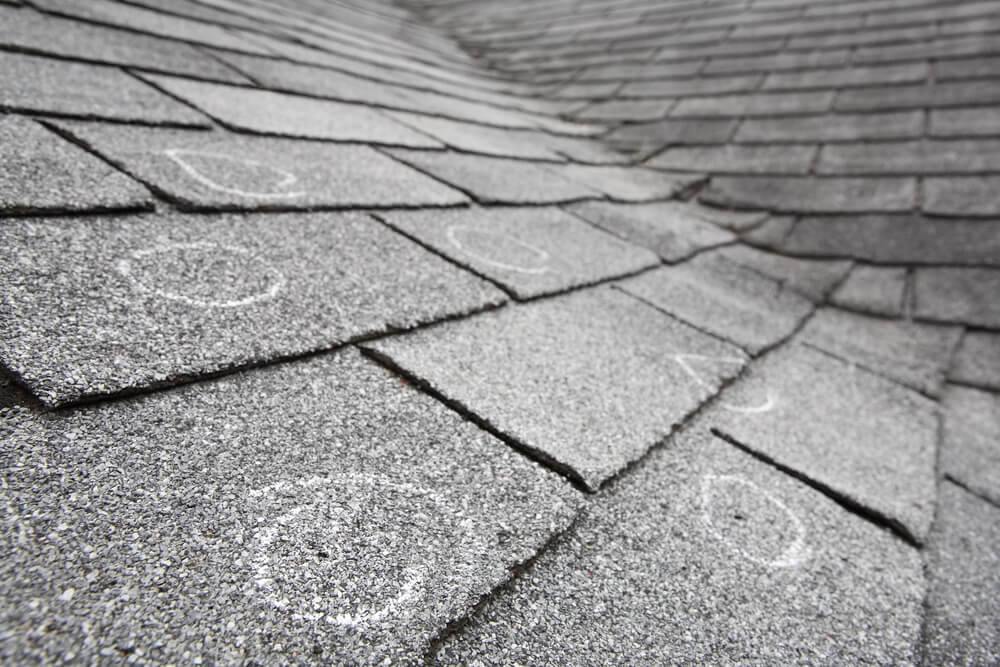
Hailstorms can wreak havoc on your roof, causing significant granular loss and damage. When hail strikes, it acts like a deep tissue massage for your roof, loosening up granules on the shingles. This granular loss weakens the integrity of the roof, making it more susceptible to further damage from rain, snow, or heavy winds.
Understanding the Effects of Wind Storms
Severe wind storms can exacerbate the problem of premature roof failure. Missing shingles, often a result of strong winds, create vulnerable spots on the roof where leaks can occur. These leaks not only compromise the structural integrity of the roof but can also lead to water damage inside your home.
Identifying Signs of Premature Roof Failure
Recognizing the early warning signs of premature roof failure is essential for taking proactive measures to address the issue. Keep an eye out for:
- Granular loss: Check your gutters and downspouts for an accumulation of granules, indicating wear and tear on your roof.
- Missing shingles: Inspect your roof after a storm for any missing or damaged shingles that may need to be replaced.
- Leaks: Look for water stains or moisture in your attic or ceilings, which could indicate a leaky roof.
- Sagging or drooping areas: If you notice any areas of your roof that appear to be sagging or drooping, it could be a sign of underlying structural damage.
Preventing Premature Roof Failure
While it’s impossible to completely eliminate the risk of premature roof failure, there are steps you can take to minimize the likelihood of damage:
- Regular maintenance: Schedule regular inspections and maintenance to identify and address potential issues before they escalate.
- Prompt repairs: Address any damage or missing shingles promptly to prevent further deterioration of the roof.
- Upgrading materials: Consider investing in high-quality roofing materials that are designed to withstand extreme weather conditions.
- Reinforcing weak spots: Reinforce vulnerable areas of your roof, such as valleys and eaves, to minimize the risk of leaks and damage.
Conclusion
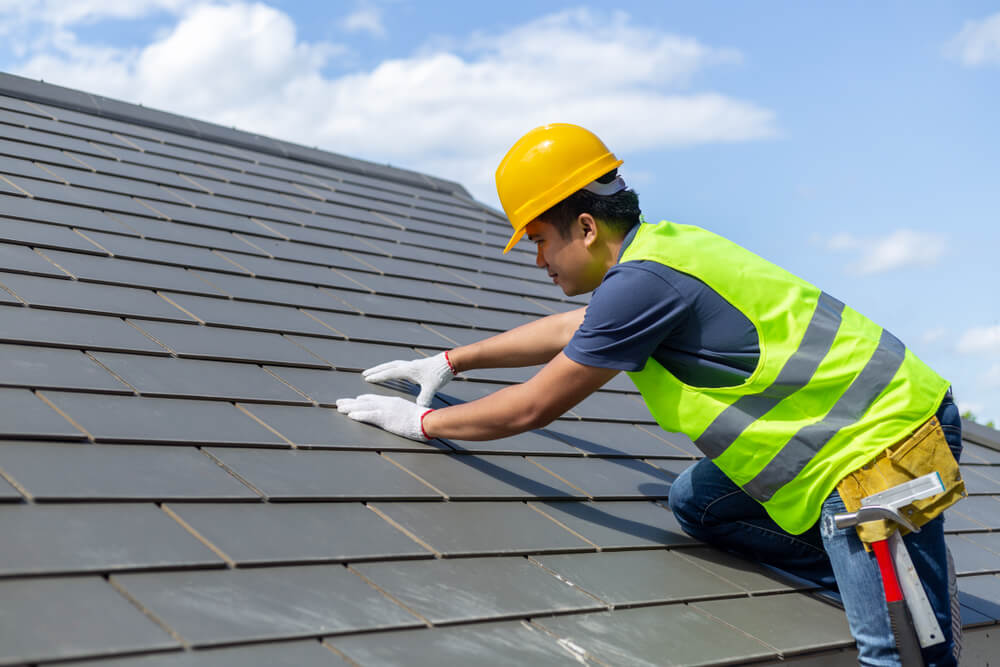
Premature roof failure can pose significant challenges for homeowners, jeopardizing the integrity of their homes and incurring costly repairs. Understanding the underlying causes, such as hail and windstorm damage, is crucial in mitigating the risk of premature failure. By taking proactive measures such as regular inspections, timely repairs, and investing in quality roofing materials, homeowners can safeguard their investment and ensure the longevity of their roof. Remember, early detection and preventive maintenance are key to protecting your home from premature roof failure. If you need assistance with roof inspections or repairs, don’t hesitate to contact A to Z Construction today for reliable and professional service.
How Much Does Storm Damage Roof Repair Cost?
Severe weather conditions can wreak havoc on your home, especially on its most crucial protective layer – the roof. When faced with storm damage, prompt and effective repair is essential to maintain the structural integrity and safety of your house. In this comprehensive guide, we’ll explore the various factors that can impact the cost and process of storm damage roof repair, empowering you to make informed decisions and safeguard your home against future weather-related challenges.
Understanding the Variables
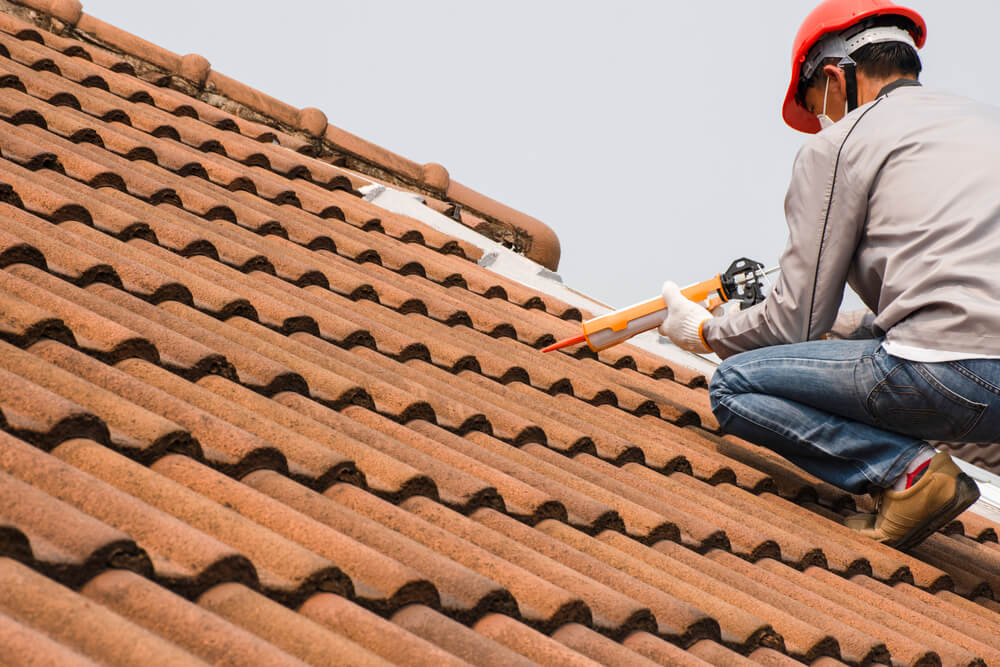
Roof Characteristics
The extent of storm damage roof repair can vary depending on several factors inherent to your roof’s structure. The steepness of the roof, the number of squares it encompasses, and its overall size all play significant roles in determining the repair process and associated costs. Larger homes often entail more extensive repairs, while smaller structures may require less extensive interventions.
Roofing Materials
The type of roofing material also influences the repair process and cost considerations. If your roof is adorned with asphalt shingles, repairs may be more affordable compared to those involving metal, slate, or clay roofs. Asphalt shingles are commonly regarded as the most cost-effective option for homeowners, offering a favorable balance between durability and affordability.
Brand and Quality
Additionally, the brand and quality of the roofing materials utilized can impact repair expenses. Higher-quality shingles may withstand storm damage more effectively, potentially reducing the frequency and severity of repairs over time. However, opting for premium materials may initially incur higher costs but could yield long-term savings by minimizing the need for frequent repairs.
Assessing Storm Damage
Visual Inspection
After a severe storm, it’s crucial to conduct a thorough visual inspection of your roof to assess any potential damage. Look for signs of missing or damaged shingles, sagging areas, or water leaks in the attic. Even seemingly minor issues can escalate if left unaddressed, leading to more extensive and costly repairs down the line.
Professional Evaluation
While a visual inspection can provide valuable insights, it’s advisable to enlist the expertise of a professional roofing contractor for a comprehensive assessment. Experienced professionals can identify hidden damage, assess the overall condition of your roof, and recommend suitable repair solutions tailored to your specific needs and budget.
The Repair Process
Temporary Measures
In some cases, temporary repairs may be necessary to mitigate immediate risks and prevent further damage. These interim solutions may include tarping damaged areas or applying sealants to temporarily seal leaks until permanent repairs can be undertaken.
Permanent Solutions
Once the extent of the damage has been determined, your roofing contractor will proceed with permanent repair measures. This may involve replacing missing or damaged shingles, repairing underlying structural issues, and reinforcing vulnerable areas to enhance durability and resilience against future storms.
Cost Considerations
Budgeting Wisely
Storm damage roof repair costs can vary widely depending on the extent of the damage, the choice of materials, and the complexity of the repair process. By obtaining multiple quotes from reputable roofing contractors and prioritizing essential repairs, you can effectively manage costs while ensuring the long-term integrity of your roof.
Insurance Coverage
In many cases, homeowners’ insurance policies may provide coverage for storm damage roof repairs. Review your policy carefully to understand the extent of your coverage and any applicable deductibles. Promptly document the damage and file a claim with your insurance provider to expedite the repair process and minimize out-of-pocket expenses.
Conclusion
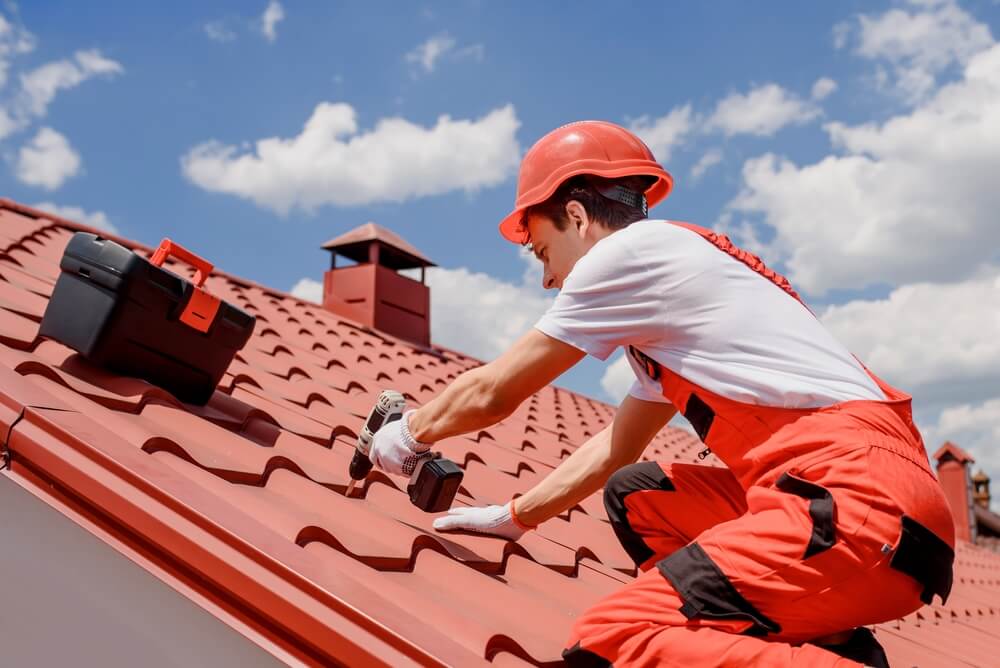
Prompt and effective storm damage roof repair is essential to safeguarding your home against the elements and preserving its value and structural integrity. By understanding the variables that can influence repair costs, conducting thorough assessments, and partnering with experienced professionals, you can navigate the repair process with confidence and ensure the long-term protection of your most valuable asset. If you need expert assistance, don’t hesitate to contact A to Z Construction today for reliable and comprehensive roofing solutions.
How Long Does Storm Damage Roof Repair Usually Take?
When your home’s roof suffers damage due to a storm, prompt repair is essential to prevent further issues such as water leaks, mold growth, and structural damage. In this guide, we’ll walk you through the process of storm damage roof repair, highlighting key steps and considerations along the way.
The Day of Roof Replacement
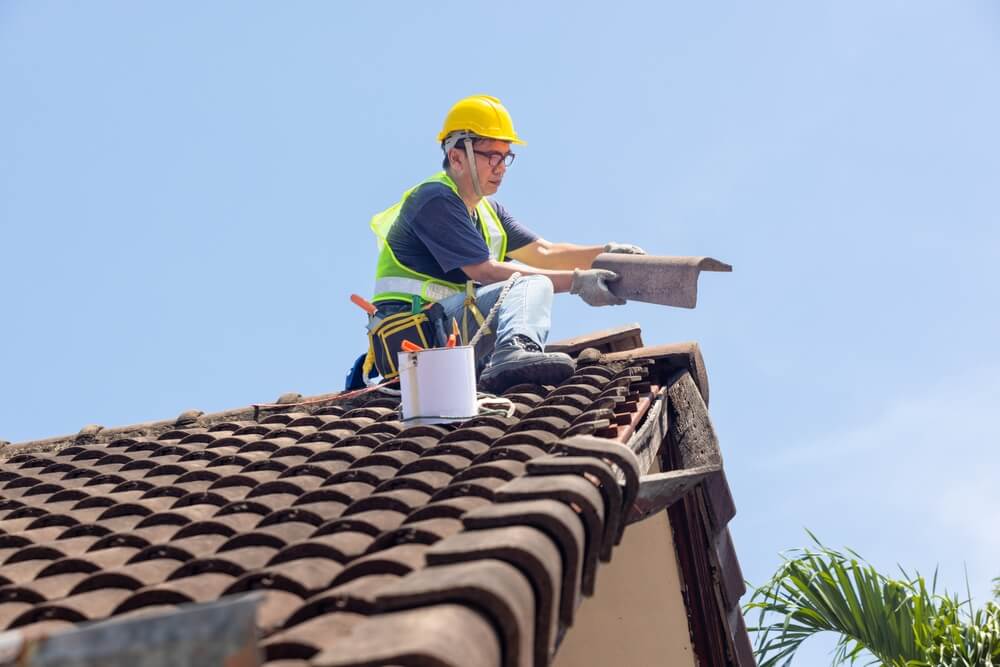
The day of getting your roof replaced is a crucial step in the repair process. Depending on the size of the roof and the extent of the damage, the replacement process typically takes about a day or two to complete. It’s essential to hire a reputable roofing contractor who can efficiently handle the job while ensuring quality workmanship.
Work and Insurance
When it comes to storm damage roof repair, navigating the complexities of insurance coverage is often a significant aspect. Your insurance company plays a crucial role in the repair process, as they may need to assess the damage, provide estimates, and approve the claim before work can commence. However, it’s important to note that some insurance companies may take longer to process claims, delaying the start of repairs.
Start to Finish Timeline
From the initial filing of the insurance claim to the completion of the roof repair, the timeline can vary depending on several factors. While the entire process may take a couple of months, the actual replacement of the roof itself should only take about a day or two. It’s essential to work closely with your roofing contractor and insurance provider to ensure a smooth and timely resolution.
Factors Influencing Timeline
Several factors can influence the timeline of storm damage roof repair. The size of the roof, the extent of the damage, and the availability of materials and labor all play a role in determining how long the process will take. Additionally, as mentioned earlier, the responsiveness of your insurance company can also impact the overall timeline.
Importance of Prompt Repair
Prompt repair of storm-damaged roofs is crucial to prevent further problems and protect your home’s integrity. Even minor damage can escalate quickly, leading to more extensive and costly repairs down the line. By addressing issues promptly and efficiently, you can minimize the risk of additional damage and ensure the longevity of your roof.
Choosing the Right Contractor
When undertaking storm damage roof repair, choosing the right contractor is paramount. Look for licensed and insured professionals with a proven track record of quality workmanship and customer satisfaction. Additionally, consider seeking recommendations from friends, family, or neighbors who have recently undergone similar repairs.
Conclusion
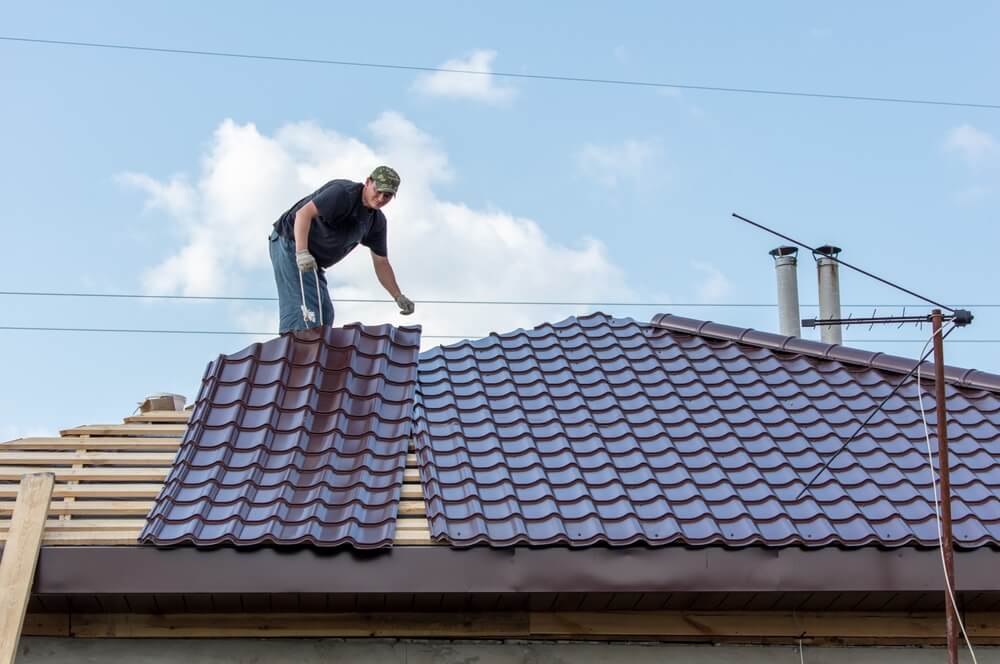
Storm damage roof repair is a process that requires careful attention to detail and timely action. From filing insurance claims to completing the replacement, every step plays a crucial role in restoring your home’s safety and security. By understanding the process and working with trusted professionals, you can navigate the repair process with confidence and peace of mind. By working with reputable contractors like A to Z Construction, you can navigate this process with confidence and peace of mind. Contact A to Z Construction today for personalized assistance tailored to your roofing needs.
Storm Damage Roof Repair Process: What Can I Expect?
In the aftermath of a storm, the last thing you want to worry about is the state of your roof. Yet, it’s often one of the areas most susceptible to damage. Understanding the storm damage roof repair process can alleviate some of the stress associated with this situation. Let’s walk through what happens from start to finish.
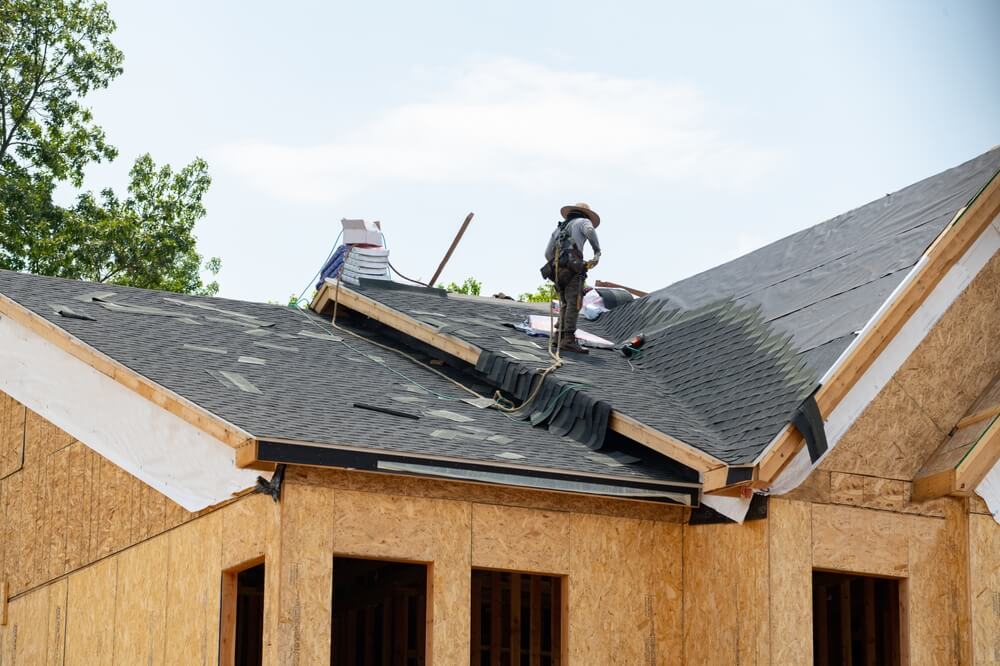
Assessing the Damage
When you notice damage to your roof after a storm, the first step is to assess the extent of the damage. This involves inspecting the roof for any missing shingles, cracks, or leaks. It’s crucial to document the damage thoroughly, as this will be essential when filing an insurance claim.
Filing the Claim
Once you’ve documented the damage, the next step is to file a claim with your insurance company. This typically involves contacting your insurance agent and providing them with the necessary information and documentation. They will then send an adjuster to assess the damage and determine if the claim is valid.
Approval and Payment
If the insurance company approves the claim, they will issue a check to cover the cost of repairs. This check is typically made out to you and your contractor or construction company. Once you receive the check, you can provide it to your contractor to initiate the repair process.
The Repair Process
With the necessary funds in hand, your contractor can begin the repair process. This typically starts with cleaning the area around the roof to ensure a safe working environment. A netting system may be set up to protect the sides of your home during the tear-off process.
Tear-Off and Underlayment
The next step is to remove the damaged shingles and any underlying materials. This process, known as tear-off, involves stripping away the old roofing materials to prepare for the installation of new ones. Once the roof is cleared, the contractor will install new underlayment to provide an additional layer of protection against the elements.
Reshingling
With the underlayment in place, it’s time to reshingle the roof. New shingles will be carefully installed to ensure a secure and watertight seal. This step not only restores the appearance of your roof but also enhances its durability and longevity.
Cleanup and Inspection
Once the new roof is installed, the contractor will thoroughly clean up the area, removing any debris and ensuring that your property looks as good as new. A magnet may be used to pick up any stray nails to prevent injury and damage to your property.
Conclusion
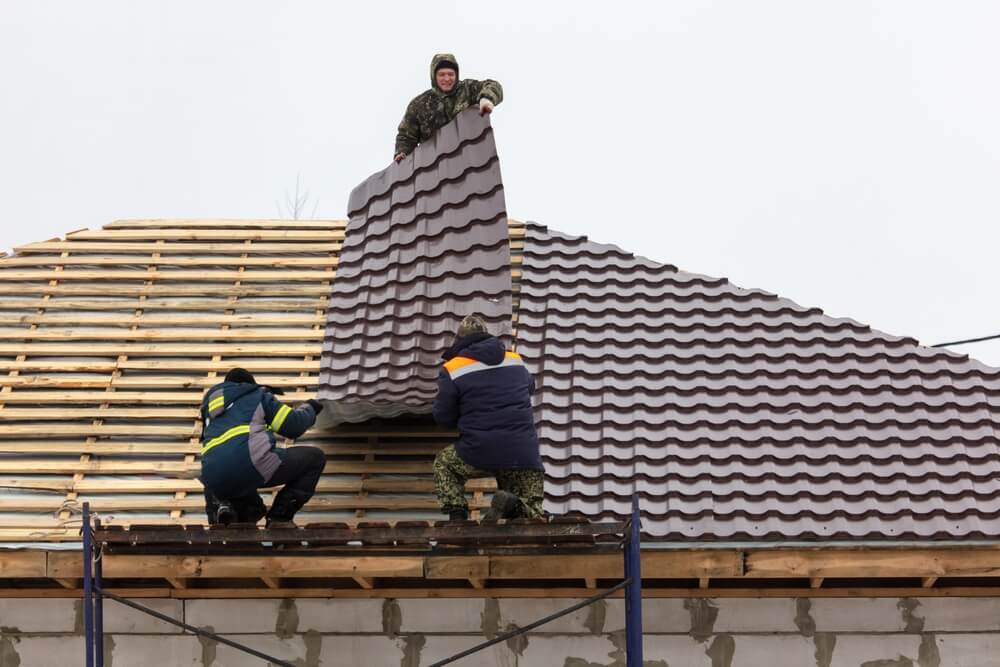
Experiencing storm damage to your roof can be a stressful experience, but knowing what to expect during the repair process can help ease some of that stress. By following these steps, you can restore your roof to its former glory and protect your home from further damage. If you find yourself in need of assistance, don’t hesitate to contact A to Z Construction today for reliable and professional roof repair services.
Is Your Roof Ready? Pre-Storm Preparation Tips for Homeowners
When storms strike, our homes stand as the first line of defense. But are we adequately prepared for the onslaught? Preparing for storms can be challenging, but taking a few proactive steps can significantly mitigate potential damage from a storm and ensure the safety of our homes and loved ones.
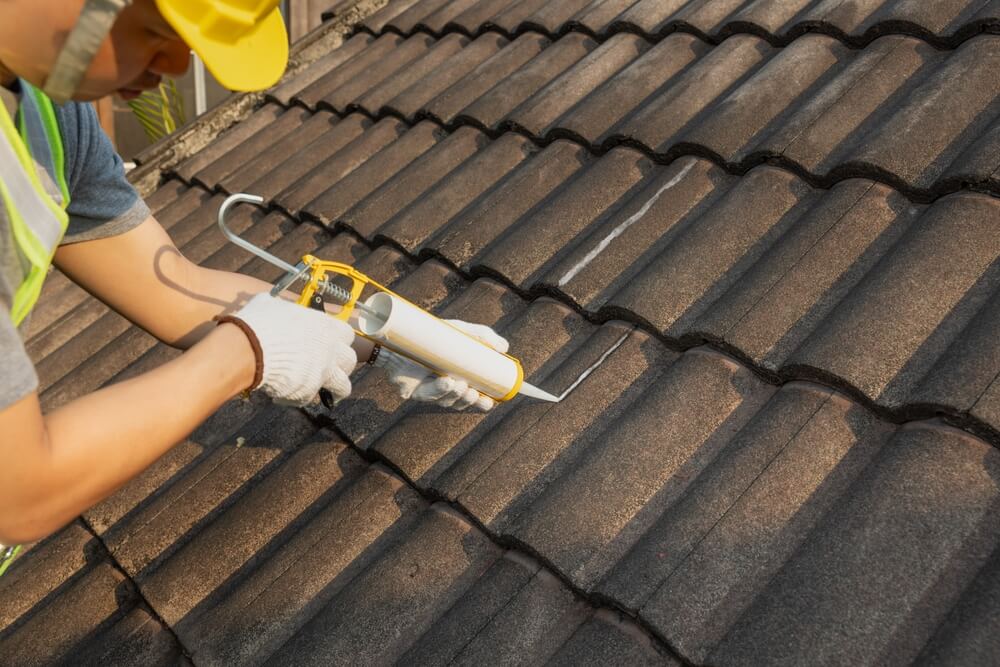
Understanding the Nature of Storms
Before exploring preparations, it’s essential to grasp that storms, whether thunderous downpours or storms filled with hail are acts of nature beyond our control. In the state of Minnesota, where storms are a common occurrence, the question often arises: will filing an insurance claim for storm damage lead to increased premiums? Surprisingly, the answer is no. As storms are considered acts of God, insurance premiums typically remain unaffected by legitimate claims.
Assessing Roof Condition
One of the most vulnerable areas of our homes during storms is the roof. While it’s true that we can’t prevent storm damage entirely, maintaining our roofs can significantly reduce the risk. Older roofs, in particular, are more susceptible to hail damage. Therefore, regular roof maintenance is crucial. Keep your roof clear of debris and ensure there are no overhanging branches or objects that could potentially cause damage during a storm.
Exploring Shingle Varieties
Not all shingles are created equal when it comes to weathering the storm. While no shingle is entirely hail-proof, certain types exhibit greater resilience. Various shingle materials, from asphalt to composite, offer different levels of protection. Investing in shingles designed to withstand hail can provide an added layer of defense against storm damage.
Considering Metal and Slate Roofing
For those seeking superior storm protection, metal, and slate roofing present compelling options. These materials boast exceptional durability and resistance to hail damage. While they may entail a higher initial investment, the long-term benefits in terms of durability and peace of mind during storms make them worthy considerations.
Taking Proactive Measures
Beyond roofing materials, there are additional proactive measures homeowners can take to fortify their homes against storms. Ensuring proper insulation and reinforcement of windows and doors can prevent water infiltration and structural damage. Additionally, securing outdoor furniture and fixtures ahead of a storm can minimize potential projectiles and safeguard both property and occupants.
Conclusion
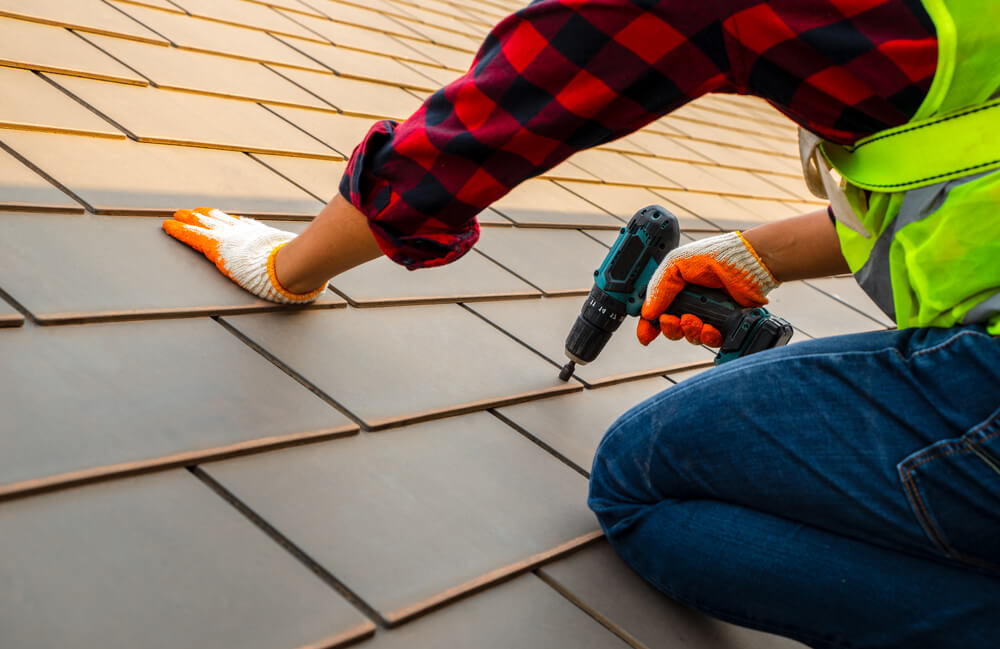
While we may not be able to control the whims of nature, we can certainly take steps to prepare and protect our homes against its fury. Regular maintenance, investing in resilient roofing materials, and implementing proactive measures can all contribute to minimizing storm damage. Remember, when it comes to safeguarding your home, preparation is key.
For further assistance with storm preparation or roofing concerns, don’t hesitate to contact A to Z Construction today. Our team is dedicated to ensuring your home is resilient in the face of nature’s challenges.
Reasons You May Need To Hire Metal Roofing Contractors
The roof is one of the integral parts of your home and keeps your possessions protected and safe. While many homeowners use asphalt shingles for their residential roofs, metal roofs are also becoming a trend these days for many good reasons. According to industry experts, metal roofs are more energy-efficient, come with a longer lifespan and have a lesser impact on the environment. But a poorly installed metal roof may not last longer than you expected. This is the reason, you must hire professional roofers to get the job done efficiently.
Reasons to Hire Professional Metal Roofing Contractors
There are many reasons you need to hire professional metal roofing contractors for your roofing project and some of them are listed below in this article.
Metal Roofing Installation Requires Special Techniques
Metal roof installation is quite different from roof shingles installation. Metal roofs are not the same as other roofing systems and require special techniques to be installed properly. And if you hire general roofers to install a metal roof, they may not be experts to complete the job capably. This is the reason, hiring professional metal roofing contractors is always a good idea to get your metal roof installed as it should be. They are equipped with all the essential techniques and tools to complete the project without facing troubles and workplace accidents.
Ensures the Longevity and Quality of Your Metal Roof
Regardless of the roofing systems, materials are not cheap. Some roofing materials are less expensive than others but overall roofing costs are a huge investment throughout life. Experts say that metal roofs are to last for 40 to 60 years. The installation process can also have a direct impact on the longevity of your metal roof. When installed improperly, metal roofs can cause expensive repairs and damages. Therefore, you must work with the right professionals to get the job done as planned. Professional metal roofing contractors are more of an investment and can make your roof last longer.
Concerns with Safety Are Mitigated
Safety is one of the major concerns when it comes to roof installation. Risks of accidents and damages are higher when you try to install or repair metal roofs yourself. Certain tools and specific installation techniques are required to complete the job successfully. But you may not have enough skills and necessary tools to do it yourself.
Accidents happen during roof installation projects and can cause several injuries and damages to the properties. It is challenging for an inexperienced person to focus on the installation while still trying to avoid falling off the roof simultaneously. Professional metal roofers are insured and equipped with essential safety gear and tools to do the job without facing accidents. Since they are insured, they are better able to cover on-site injuries and property damages in case anything unfortunate happens. So, make sure to hire properly licensed and insured metal roofing contractors for your next metal roofing project to avoid unnecessary expenses and on-site accidents.
Ensures the Metal Roof Lasts
Since metal roofs are sturdy and can last longer, they must be installed properly with help of the right tools and techniques. Hiring expert metal roofers is the only way to make sure your roof is installed properly for an extended span of life. When you choose to DIY metal roofing installation, you might end up paying lots of money (in terms of repairs or replacements) in the long run. Professionals ensure that your metal roof lasts longer and is well maintained for increased endurance. This also helps you make sure you get the best services that are worth your money.
To Avoid Collateral Damage
As it is mentioned earlier, installing a metal roof yourself can compromise the quality and endurance of your roof. Some people also hire general roofers for metal roofing installation to save some bucks on the installation process. General roofers might have years of experience in general roofing installation and replacements, they might not have enough expertise and knowledge on how to install metal roofs skillfully. Improper installation can end up with issues like water damage and leaky roofs etc. That’s why; you should hire licensed metal roofing contractors like A to Z Construction Inc which specializes in metal roof installation and replacement. They are licensed and insured to keep their employees and your property safe from damages.
Faster Project Completion
Professional roofers with years of experience are better able to install or replace metal roofs faster than DIY enthusiasts or general roofers. They not only offer their services with better industry knowledge but are also equipped with all necessary tools and safety gear to do the job in the best way possible. Inexperienced individuals or general roofing contractors take more time to install metal roofs because they lack the essential skills and expertise for perfect metal roof installation. Along with installing a metal roof accurately, they also help you maintain metal roofs for increased longevity and durability.
Quality Work
Quality comes with perfection. When you hire professional roofing contractors with specific skills and experience in metal roofing, they are better able to complete the installation process faster without compromising the quality of work. They are passionate to make sure the clients are delighted with the quality of work. Therefore, they use the right tools, roofing materials, safety gear, and techniques to install or replace metal roofs capably. This not only completes the work in a timely manner but increases the longevity and endurance of the roof as well.
Wrapping Up
Roofing is one of the major investments and you cannot afford a single mistake. Choosing a metal roof for your personal or commercial property is a good choice as it lasts longer and is energy efficient as well. Hence, it is also important to hire metal roofing contractors instead of hiring general roofers to get the project completed in a timely manner without compromising the quality of work. So, spend enough time choosing the right metal roofers for your next project. If you need metal roofing services in twin cities MN, feel free to contact us for a free quote or estimate or call our experts for consulting.
10 Signs of Storm Damage Every Property Owner Should Know
Have you ever wondered why a few houses remain untouched after inclement weather? Most of the time it can be chalked up to good luck, while other times, the structural integrity and roofing material of the home play a significant role.
When a severe storm strikes, it can cause serious damage to your property. However, the damage can often go unnoticed, and place your property at higher risk when subsequent storms occur.
After a storm, you should conduct an inspection to evaluate the extent of the damage and have it repaired by a professional storm damage contractor. Spotting the signs of storm damage can help you resolve the issue and schedule repairs before it becomes more detrimental to your property.
What Is Storm Damage?
Storm damage is any kind of destruction that can occur to a property as a result of harsh weather conditions. According to CNBC, about 35 million homes in the U.S. are affected by inclement weather in a given year. The interior and exterior parts of your property can be impacted by these occurrences.
Types of Storm Damage
There are four different types of storm damage that can affect your property. These include:
- Water: Heavy rainfall can affect the interior and exterior of your property by impacting the walls, floors, roof, and plumbing.
- Ice: Heavy hail storms produce ice that can easily damage your roof and siding.
- Wind: Strong winds can damage your roof and shingles.
- Impact: Falling objects like falling trees or light poles can damage your property.
How to Know if Your Property Has Storm Damage
The roof and exterior walls of your property are the areas that are most susceptible to storm damage. However, in severe weather, the entire structural integrity of your home can be impacted.
When conducting an inspection of your property after a storm, here are the signs to look out for that likely indicate storm damage:
1. Missing Asphalt Shingles
Many homeowners choose asphalt shingles for their roofing system as asphalt is one of the most popular roofing materials. Professional contractors use nails to install and secure asphalt shingles.
Heavy storms can displace shingles by causing them to detach from the roof. If you’ve noticed a couple of missing shingles on your roof after a storm, then it’s likely your property has storm damage.
2. Dented Metal Flashing
The purpose of the metal flashing material on the roof is to direct stormwater away from the roof and prevent water leaks. During a heavy storm, impact from hail or debris may dent the flashing on your home’s exterior. It’s important to repair or replace this material right away to prevent your roof from leaking.
3. Broken Tiles or Cracked Concrete Shingles
Tiles and concrete shingles are the most durable roofing systems. However, during a heavy storm, impact from flying debris may cause cracks in your tile roofing or concrete shingles. Initially, the cracks may be difficult to notice, meaning a closer inspection will be required from an experienced home exterior contractor.
4. Leaking Roof or Ceiling
Every roofing system is installed with a waterproof material to protect the property’s interior. During a heavy storm, your roofing system can be compromised due to shifted ties or missing shingles. Any changes in the structural integrity of your roof can lead to water leakage.
It’s vital that you look for early signs of water leakage on your roof or ceiling. Whether you notice discoloration or brown ring-like patches, both can indicate your roof may have been damaged in a storm.
5. Dented or Chipped Siding
Dents, chips, or missing sections of the siding material are an indication of storm damage. Storms and heavy winds carry debris and when they land on your property’s exterior, the impact causes damage.
It’s important to update your siding to protect your house from harsh weather. The siding material serves three purposes:
- Protecting your property’s interior
- Insulation
- Enhancing curb appeal
6. Dampness on Interior Walls
During construction, contractors install waterproof material to create a barrier between the exterior and interior walls. The barrier protects the interior walls from water damage. However, during a storm, the roof or the sides may be exposed to leakage, causing the interior walls to soak in water.
7. Visible Growth of Mold or Mildew
Mold and mildew grow in damp, humid areas. When your interior walls are exposed to water after a storm, you’ll notice green, gray, or sometimes black residue on the walls. The residue is a sign of mold or mildew growth due to water seeping through the walls.
8. Chipped Paint on Exterior Walls
If your property has painted exterior walls, you may notice chipped or peeling paint after a storm. Damage to exterior paint is common after a hail storm or storms with heavy winds.
9. Damaged Window Frames
Professional contractors install strong window frames to support the panes during every kind of weather. Damaged window frames are a sign of wind damage. If you notice dents or chips on your window frame, it’s important to do a thorough inspection of the entire property to find other possible damaged areas.
10. Shattered Windows
Harsh hail storms are notorious for causing the most damage to a property’s exterior. Ice drops from the sky at a very high force and when it hits the window, it shatters. Shattered windows indicate heavy hail storms, and you should check the roof for additional damage.
Call A to Z Construction for Quality Storm Damage Repairs
Installing a proper roofing and storm drainage system can save your property from severe damage. Early storm repair is vital to saving your property from further damage. At A to Z Construction, we provide professional storm damage repair services in MN to help restore your property better than before. Contact us today to get a quote and to learn more about our services.


